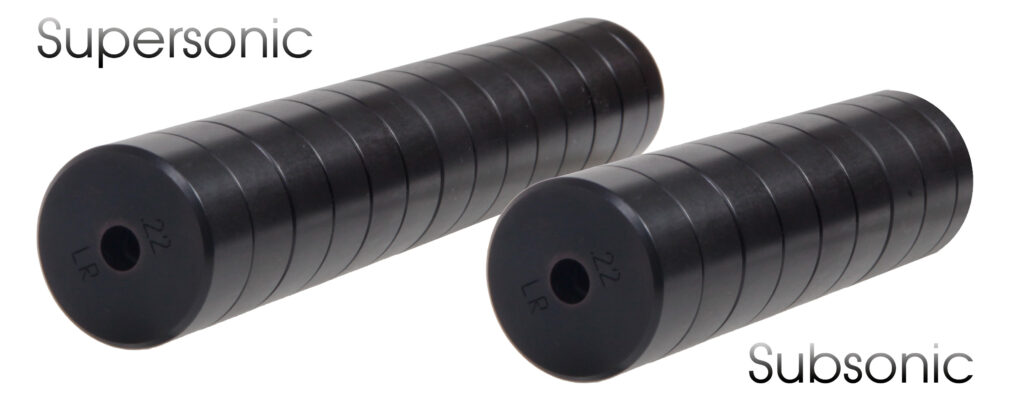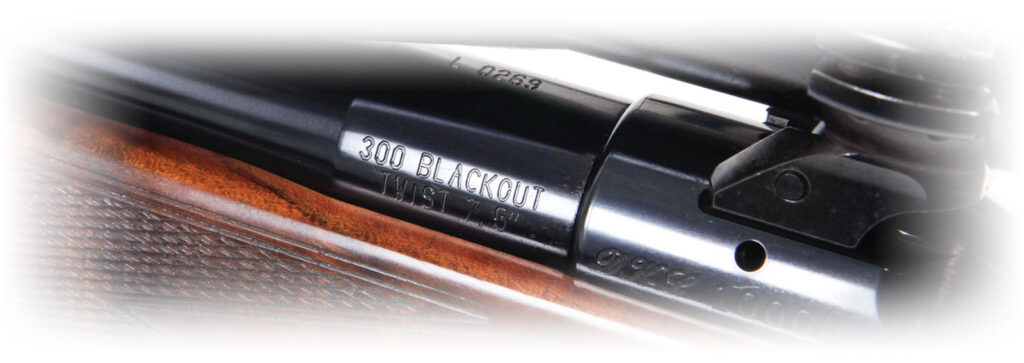-
Comparing Subsonic vs. Supersonic Ammunition
You may have heard the terms “subsonic” and “supersonic” mentioned before in the world of shooting – especially when it comes to shooting with a sound moderator. With the Schultz & Larsen .22 LR Mini available in Subsonic and Supersonic for instance.
In this short article. we cover what these terms mean. Where they come from. And, most importantly, why they matter.

The Difference between Subsonic and Supersonic Ammo
“CRACK”
Each and every time you pull the trigger on supersonic ammo, you hear that sound. This is because supersonic ammo is propelling the bullet faster than the speed of sound. When it breaks the sound barrier, you hear that sonic crack.“NO CRACK”
When you shoot subsonic ammo, you won’t hear the same crack as you do with supersonic ammo. This is because a subsonic bullet is travelling slower than the speed of sound. As a result, it does not break the sound barrier, so it won’t make that distinctive crack.What is Supersonic Ammo?
You may already know this, but Supersonic ammo makes up pretty much all of the ammo you’ve shot before. That noticeable “crack” sound from a shot is inherently present in all off-the-shelf calibre loads.
What is Subsonic Ammo and How Does it Work?
Subsonic ammo of any calibre is usually going to be loaded with a heavier projectile. This serves two purposes: it retains more energy while also slowing the bullet’s speed.
That slower speed is the key to the effectiveness of subsonic ammo. If your bullet is travelling slower than the speed of sound (1,100fps), then it won’t break the sound barrier and produce the sonic crack associated with traditional gunfire.
Why Use Subsonic Ammo?
Most of the time, the purpose of using subsonic ammo is to keep your sound signature to an absolute minimum when shooting with a suppressor. First, you eliminate the sonic crack altogether, and the suppressor is also able to better mitigate the expansion of the gases in these rounds, resulting in even less sound.
This ammo-and-can combo will keep your shooting noise to as much of a minimum as possible.
Pros and Cons Between the Two
Like all things, there are advantages and disadvantages to everything. Choosing subsonic or supersonic ammo is no different. We’ll go over some of the points below:
Why Use Subsonic Ammo?
If you practice shooting on your own piece of property or on an outdoor range that has neighbours, using subsonic ammo with a suppressor is a good way to keep the noise down. One of the downsides is, that Subsonic ammunition is generally more expensive to buy.
Why Stick to Supersonic Ammo?
Supersonic ammo has a higher velocity, better range, more stopping power, and a flatter trajectory than subsonic ammo. As more options are available, you’ll find the Supersonic ammunition a cheaper option in comparison.
Is Subsonic Ammunition A Good Choice for Hunting?
We mentioned above that supersonic ammo has better velocity, range, stopping power, and more than subsonic ammo. While you certainly can hunt with subsonic ammo, it might not be the most ethical choice when the goal is for a quick and humane harvest.
That’s not to say that there aren’t hunting applications where subsonic ammo can perform well enough for a humane shot. One example would be small game hunting at relatively close range. Do some research on the specific game you’re hunting and work backward to find the best load for your purpose.
Sound Suppression on Subsonic vs. Supersonic Ammo
Subsonic ammo really shines when used with a suppressor. Since the goal of a suppressor is to reduce the sound signature of your shot, it only makes sense that the less noise your bullet makes to begin with, the better job a silencer can do to further reduce that sound.
You can absolutely run supersonic ammo with a suppressor, you just need to be aware of the fact that it will not be as quiet as subsonic ammo. The silencer can only do so much, and you’ll still hear the supersonic crack as the bullet breaks the sound barrier after it leaves the suppressor.
Shooting Supersonic vs. Subsonic 300 Blackout with a Sound Moderator
The 300 Blackout cartridge has become incredibly popular because of its versatility.

You can absolutely shoot supersonic .300 Blackout through your suppressor and see a noticeable reduction in sound signature. However, it’s still travelling faster than the speed of sound and you cannot avoid the telltale cracking sound.

On the other hand, when shooting subsonic 300 Blackout with a sound moderator, you’ll find that it is one of the quietest rounds out there. Aside from shooting subsonic .22 through a suppressor, subsonic 220-grain 300 Blackout rounds through a suppressor is about as close to “Quiet” as you can get.
Frequently Asked Questions
Here’s some of the most common ones as they relate to the differences between subsonic and supersonic ammunition.
How many feet per second is supersonic?
Generally speaking, the speed of sound is 1,100 feet per second, so anything at that speed or above is considered to be supersonic. There are many factors which can affect the speed and you can get really technical and factor in elevation above sea level, temperature, humidity, barometric pressure, and more to get a very precise speed for your exact location. Or, you can work off the basic 1,100fps as the general rule of thumb for the threshold between subsonic and supersonic.
How many feet per second is subsonic?
Subsonic is anything travelling slower than the speed of sound, which is generally accepted to be 1,100 feet per second. So, anything travelling less than that is subsonic. Again, as we mentioned above, you can get very specific and scientific and precise if you want, or you can use +/- 1,100fps as the threshold between the two.
Is a supersonic bullet louder than a subsonic bullet?
Basically, yes, a supersonic bullet is louder than a subsonic bullet. This is because the supersonic bullet is travelling faster than the speed of sound, which produces a cracking sound when it breaks the sound barrier.
Since subsonic bullets travel slower than the speed of sound, they do not break the sound barrier and do not produce a supersonic crack.
Can I shoot subsonic ammo without a suppressor?
Yes, you can shoot subsonic ammo without a suppressor – but there are some things to be aware of, particularly when using it in conjunction with a semi-automatic firearm.
Since subsonic ammo has a lower velocity and slower speed than supersonic ammo, you might find that it cannot provide enough energy to properly cycle the semi-automatic action on your gun. One way to remedy this would be with the AR platform and the use of an adjustable gas block.
If however, you’re shooting something like a revolver or a bolt-action rifle, this is of no concern since the gun’s action is not dependent on the performance of the ammo.
Why is subsonic ammo more expensive?
The short answer: supply and demand.
There are fewer companies making subsonic ammo than there are supersonic ammo. Those fewer companies are making fewer rounds, in part because there’s less of a demand for subsonic ammo. Since the companies could be making more money by running their machines for supersonic ammo, they’ve got to make up that price difference.
Another factor is the cost of the manufacturing materials. Generally speaking, the specific materials needed to produce subsonic ammo cost more than those for supersonic ammo. Companies aren’t going to eat those costs, so it is passed on to the consumer with a higher cost-per-round than with supersonic ammo.
Share this:




